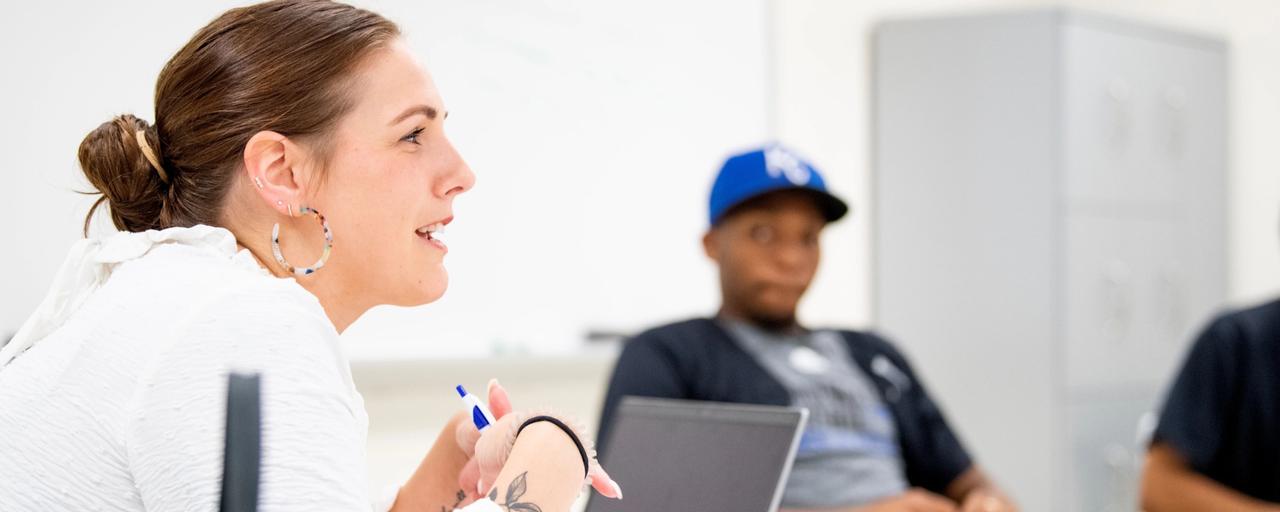Information Systems, B.S.
Format: Face To Face Credits:128
Information systems (IS) majors study the use of computers in collecting, organizing, storing, retrieving, processing, and analyzing information in response to the ever-changing challenges faced by businesses. IS graduates possess a combination of technology and business knowledge that is in high demand at firms in West Michigan and across the country.
PROGRAM OVERVIEW
The goal of the information systems program is to provide students with the intellectual foundations and experiences necessary to use information technology effectively in their chosen careers.
Cognate classes emphasize communication skills and business fundamentals, including all classes required for a minor in general business.
WHY STUDY INFORMATION SYSTEMS AT GRAND VALLEY?
The information systems program is unique in several ways:
- By choosing electives and minors in related subject areas, students can further tailor their degree to fit their individual interests and career goals.
- Theoretical foundation and practical experience offer excellent preparation for the job market, along with valuable industry experience.
- By focusing on the underlying principles behind cybersecurity, our program prepares students to handle future cybersecurity challenges, in addition to today's threats.
- Most faculty members hold doctoral degrees and have a breadth of experience in the industry.
- Dedicated, state-of-the-art computer labs offer relevant, hands-on learning.
COURSEWORK
Students study a variety of topics, including:
- Application programming
- Data analytics and problem solving
- Database systems
- Distributed computing
- IT project management
- Networking and system security
- Systems analysis
- Web development
- IT management
COMBINED DEGREE PROGRAMS
This undergraduate degree can be combined with a master's degree to save you time and money, and get you into the workforce sooner. On average, students save $8,500 in our combined degree programs and take up to four fewer classes than if earning the degrees separately.
You can even build your own combined degree from programs in different disciplines to further personalize your education and meet specific career goals.
CAREER OPTIONS
Our IS program will prepare you to begin successful careers in any of US News & World Report's "10 Best Technology Jobs in 2019":
- Software developer
- Computer systems analyst
- IT manager
- Computer programmer
- Database administrator
- Web developer
- Computer network architect
- Computer systems administrator
- Computer support specialist
- Information security analyst
SKILLS EMPLOYERS WANT
The B.S. in Information Systems at GVSU will develop the skills you need to land the job you want. Whether the skills are advanced or general, you will build a resume of qualifications that are sure to attract employers. The following skills correlate with those pulled from actual job postings.
- SQL (Programming Language)
- HyperText Markup Language (HTML)
- Java (Programming Language)
- JavaScript (Programming Language)
- Troubleshooting
- Technical Support
- Computer Hardware
- Linux
- Customer Service
- Leadership
Source: EMSI, 2020
REAL-WORLD EXPERIENCE
Hands-on learning and other fieldwork not only deepen your mastery of your discipline but also give you the edge employers seek. Visit our experience matters page to see the work GVSU students are doing in their co-ops and internships.
LOCATION & FORMAT
Undergraduate students in this major study at Grand Valley's Allendale Campus.
Format:
- Face To Face
“I like the College of Computing at Grand Valley because of how the classes are small in size and make for a more personal learning environment.”
—
Kevin Luke, Information Systems Major

